I am trying to match the simulated result from my model with the experimental result from lab. I have taken the idea from the solution given here: enter link description here
Result before applying GEKKO method:
I want the Simulated Curve to be completely match with the Experimental Curve.
Code:
m = GEKKO(remote=False)
Vocv = Data.loc[:,'Vocv'].tolist()
Tt= Data.loc[:, 'Tt'].tolist()
It= Data.loc[:, 'It'].tolist()
Vmeas= Data.loc[:,'Experimental_Voltage(v)']/6000.tolist()
Vocv = m.Param(Vocv); Tt = m.Param(Tt); It = m.Param(It)
##m.time = Tt; time = m.Var(0); m.Equation(time.dt()==1)
R0 = m.FV(lb= 2.448e-07, ub=100); R0.STATUS=1
R1 = m.FV(lb= 3e-07, ub=100); R1.STATUS=1
R2 = m.FV(lb=3e-07, ub=100); R2.STATUS=1
C1 = m.FV(lb=0.02, ub=1000); C1.STATUS=1
C2 = m.FV(lb=0.02, ub=1000); C2.STATUS=1
ym = m.Param(Vmeas)
yp = m.Var(Vmeas); m.Equation(yp==Vocv+(R0*It) \
+(R1*It)*(1-m.exp(-1/(R1*C1))*Tt) \
+(R2*It)*(1-m.exp(-1/(R2*C2))*Tt))
m.Minimize((yp-ym)**2)
m.options.IMODE = 2
m.solve(disp=False)
import matplotlib.pyplot as plt
Ex_Time= Data.loc[:,'Experimental_Time(s)']
plt.plot(Ex_Time,Experimental_Voltage/6000)
plt.plot(Tt,yp)
plt.legend([r'$Simulated_Data$',r'$Experimental_Data$'])
plt.ylabel('Voltage')
plt.xlabel('Time')
plt.savefig('sysid.png')
plt.show()
print('R0: ' + str(R0.value[0]))
print('R1: ' + str(R1.value[0]))
print('R2: ' + str(R2.value[0]))
print('C1: ' + str(C1.value[0]))
print('C2: ' + str(C2.value[0]))
Output:
R0: 2.448e-07
R1: 3e-07
R2: 3e-07
C1: 0.02
C2: 0.02
EDIT:
As suggested in the answer I have made changes however, the result I am getting is following:

Its still not matching/overlapping the experimental data.
Expected Result:

